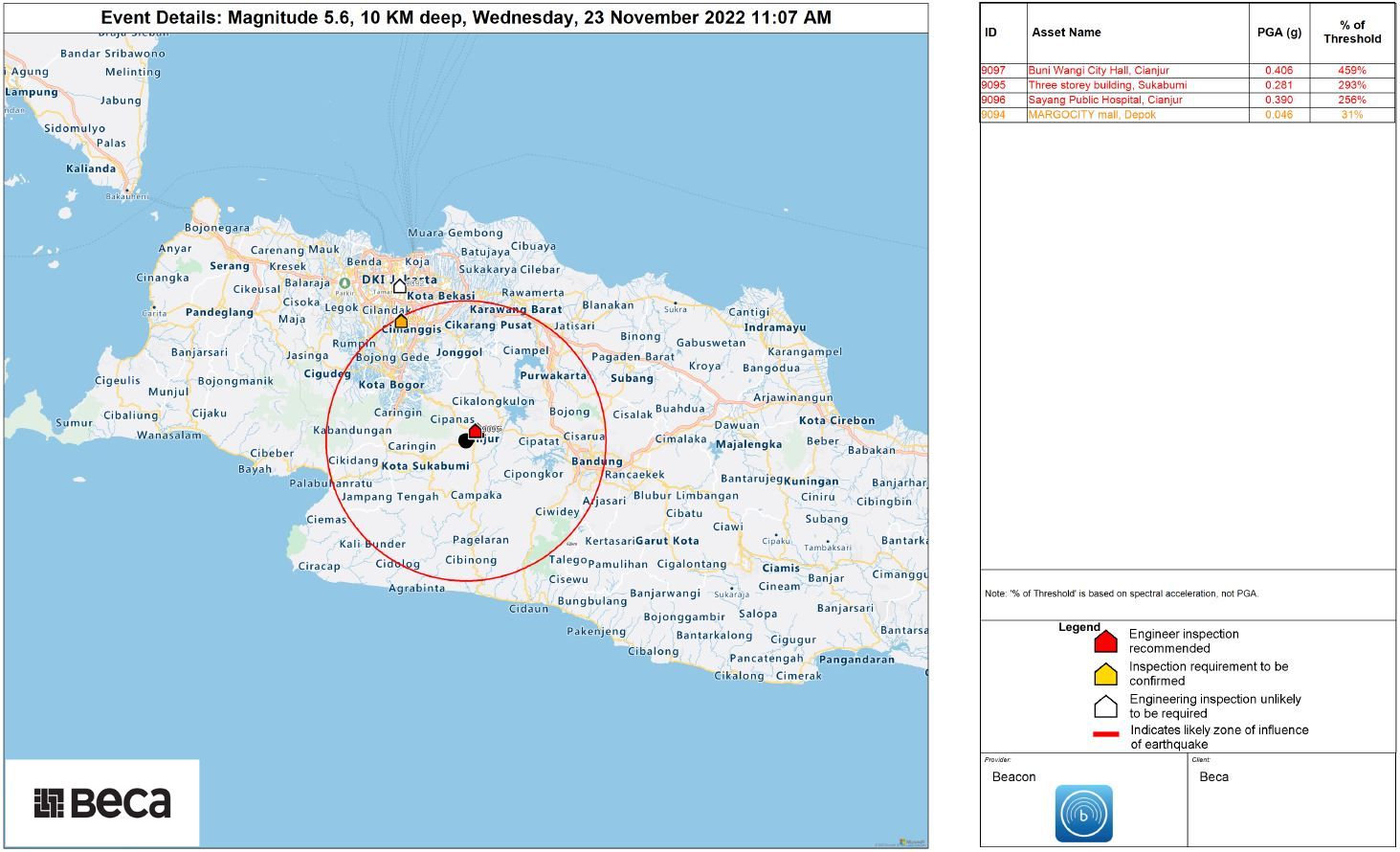On November 21, 2022 at just after 1pm, a magnitude 5.6 earthquake occurred in the Cianjur region of West Java, Indonesia. Near the epicentre, the peak ground shaking was approximately 0.5g (half of the acceleration due to gravity). Meanwhile, 100km away in Jakarta, the level of shaking was about one tenth of this, yet it was felt strongly across the capital and many high-rise buildings were evacuated, causing people to gather in the streets.
In Cianjur, a town with a population of roughly 175,000 people, the earthquake has taken more than 300 lives and is expected to cost at least USD $100 million in repairs. What might have been the outcome if the earthquake had been closer to Jakarta, a megacity with more than 10 million people?
For megacities like Jakarta, earthquake preparedness is essential. In the event of a damaging earthquake, key resources will soon be overwhelmed by demand. This includes engineers who need to inspect damaged buildings and advise owners, tenants, and government bodies on building safety issues. Many businesses will be forced to look elsewhere for trained engineers, or to make decisions in the absence of professional advice. Creating a business continuity plan and testing your response to an earthquake allows you to make best use of your organisation’s resources and get back to business faster after an event – greatly reducing the stress for all concerned.These risks are not unique to Jakarta, as half of the world’s megacities are vulnerable to earthquakes. However, risks of this magnitude are relatively new, since the cities themselves have evolved almost overnight from small towns to super centres. Studies by Nanyang Technological University in Singapore suggest that these risks will only keep getting larger, with financial risk expected to increase almost twofold in Jakarta by 2030. The Indonesia Disaster Resilience Initiatives Project (IDRIP) funded by the World Bank and executed by National Disaster Management Authority (BNPB) recognised this risk and looks to improve the preparedness of the central government and selected local governments for natural hazards including earthquakes.
As the world has become more urbanised, structural engineers have improved the seismic design of buildings. Preventing a catastrophic collapse is fundamental to earthquake risk mitigation, which often comes down to design and details. A building designed with resilience, robustness and ductility has a much greater chance of surviving an earthquake. The ‘Capacity Design’ method which protects the most important elements in a building, like columns holding up floors, was pioneered in the mid-1960s in New Zealand by John Hollings, one of the founders of Beca. Since then, Capacity Design has been adopted in many design codes globally and has saved countless lives.
Over the decades, our experience of earthquakes across the globe has helped us develop tools and specialist expertise to mitigate earthquake impacts. We have supported clients through major earthquake events with pre- and post-earthquake engineering support. We’ve also provided specialist earthquake expertise including forensic investigation and insurance support. We have designed low-damage structures that remain functional after earthquakes for clients who manage manufacturing plants and data centres where 24/7 operations are critical. We have also designed low-damage seismic retrofits, such as 8 Willis St in Wellington, where the addition of just 12 viscous dampers and a minimally invasive structural retrofit enabled us to significantly improve the seismic performance and expand the building footprint by five floors.
Furthermore, we have helped clients who manage large portfolios of buildings and need to understand the seismic vulnerabilities to develop long-term strategies to minimise or eliminate risk. This includes profiling building assets and assessing options like retrofitting structures or adding system redundancy to protect critical operations. We have also developed award-winning tools such as Beacon, a real-time earthquake monitoring and notification service. An output from Beacon can be provided within minutes of an event, combining information about specific buildings with ground motion sensor records. This enables asset owners to prioritise building inspections based on which buildings are most likely to have been impacted.
If you would like to hear more about how Beca can help with your organisation’s earthquake preparedness and seismic resilience, contact us for more information, or click here to read about our earthquake engineering services.

Jenni Tipler
Associate - Structural Engineering
 New Zealand
New Zealand
 Australia
Australia
 Singapore
Singapore